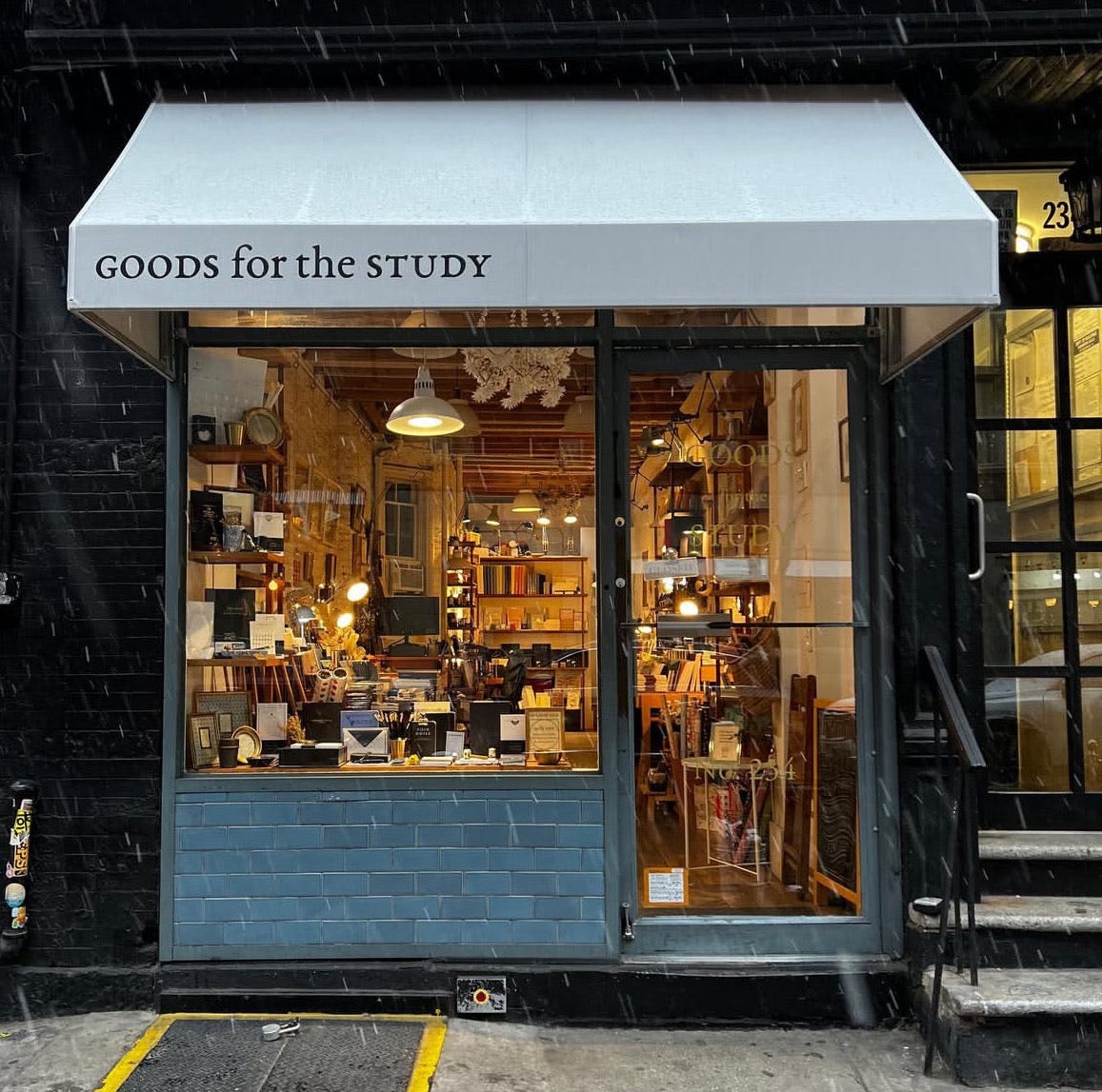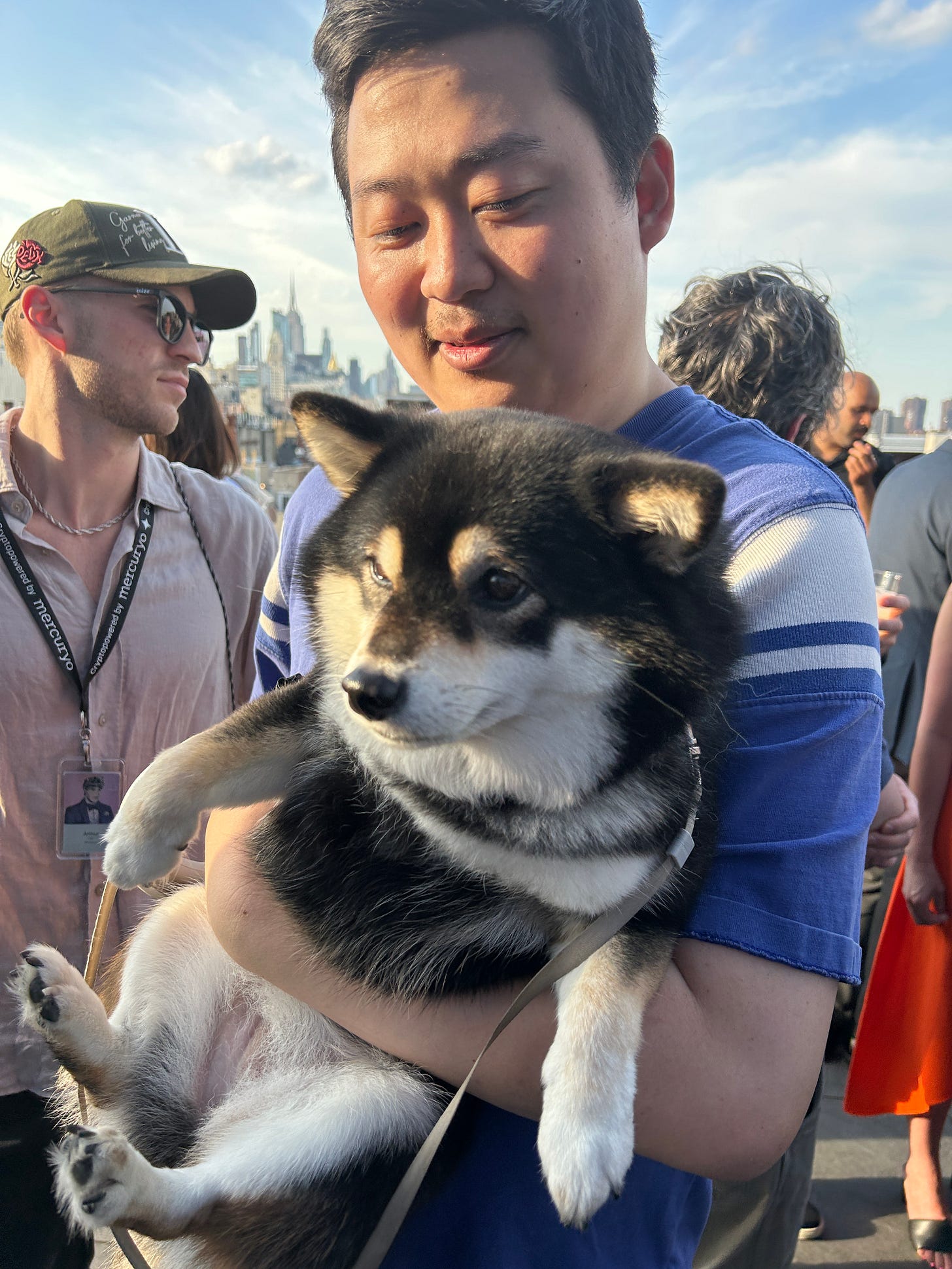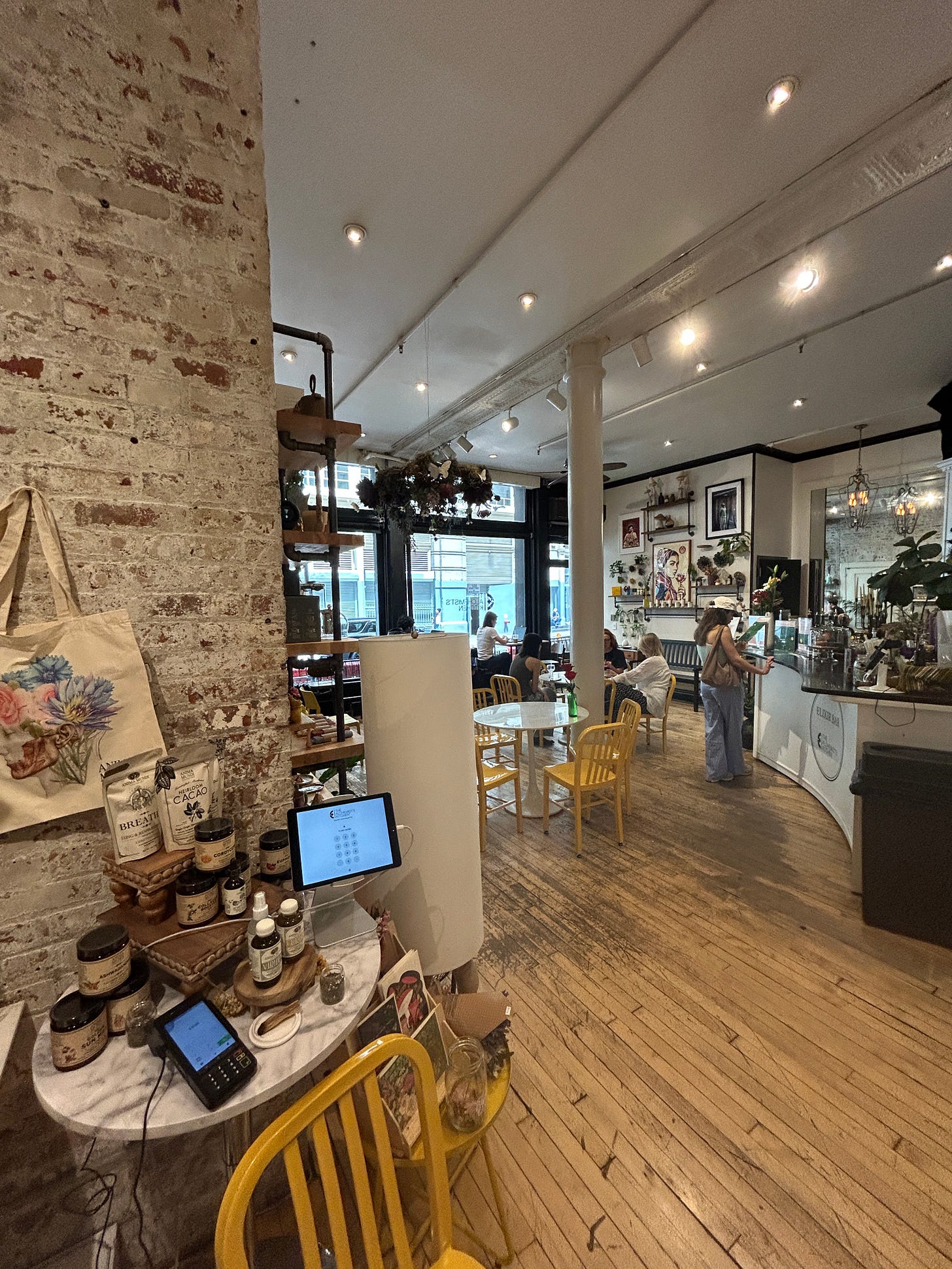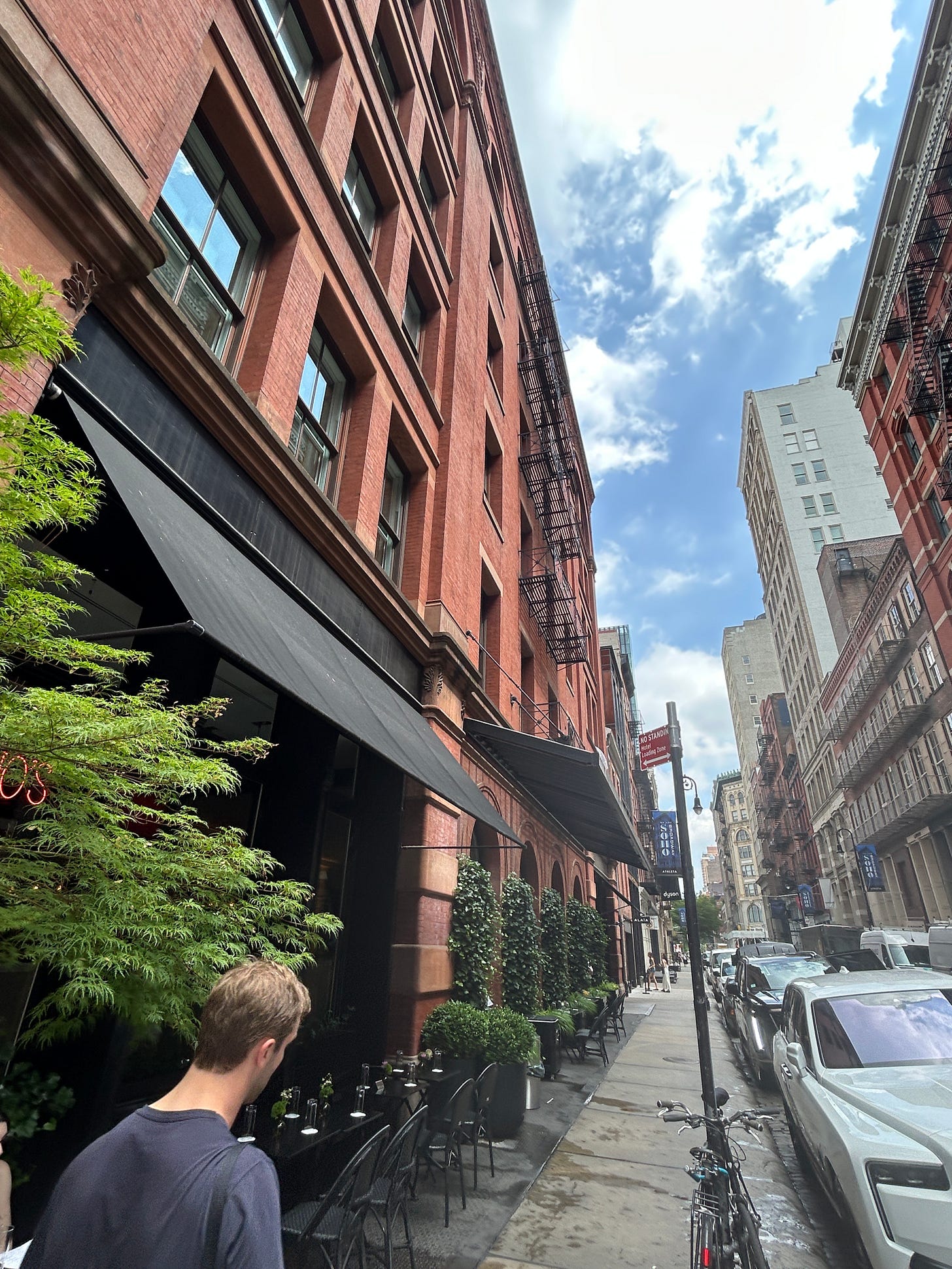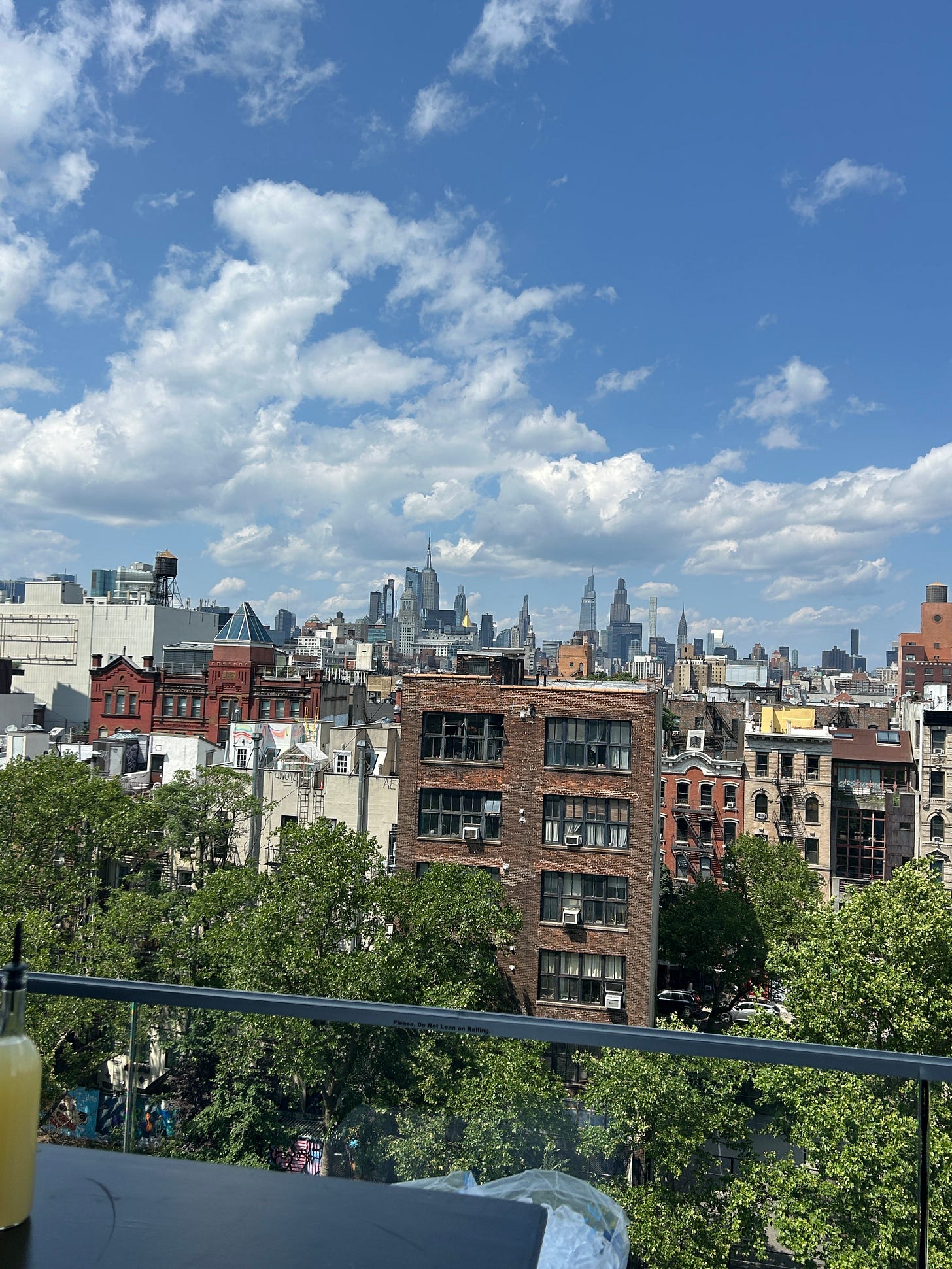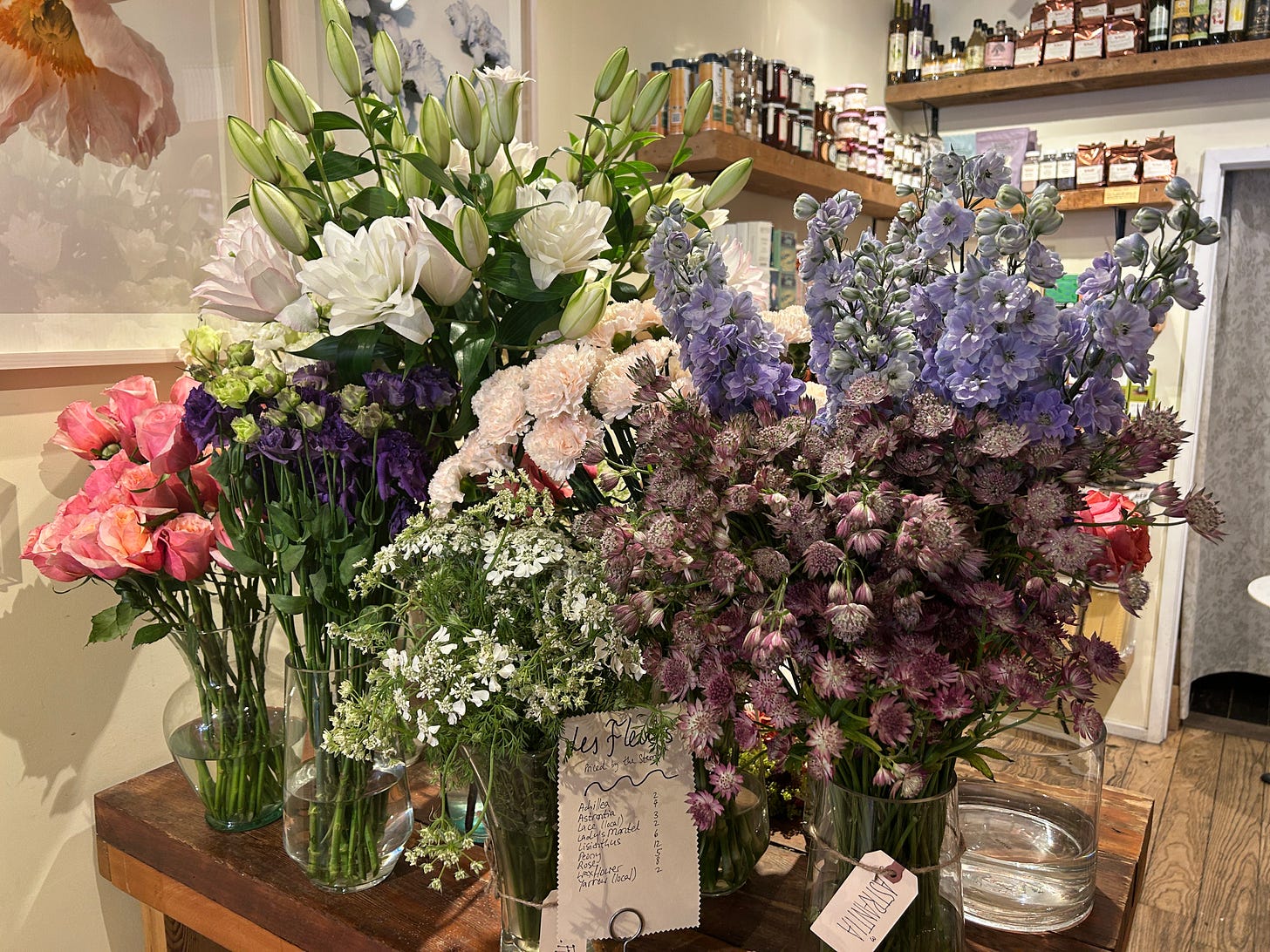I have just spent a week in New York for an exciting new blockchain event (more on that soon). I stayed in SoHo and spent any spare minutes I could find taking in the gorgeous architecture, independent retail, bookstores and stationery that proliferate everywhere you turn. Everyone is impossibly stylish despite the 35c heat.
And I talked to as many dogs as people I think (almost).
This is Carol, a mini Shiba Inu who was the only dog at a rooftop event I went to at Solana Skyline. She thought everyone was there to see her, and to be fair, more people had their photo taken with her than anyone else.
As a researcher on the future of work and workplace, living my very own research experiment is such a joy.
How not to linger in a shop entirely dedicated to salt, chocolate, bitters and flowers. I mean really.
I went to The Alchemist’s Kitchen every single day, trying different Animundi Herbals concoctions and writing. There were two or three people working on their laptops each time I went. Maybe they were tapped into the nootropic benefits of the elixir menu.
I caught up with people I knew, and met people from around the world who I spent hours in amazing conversations with over several days. So many of my absolute favourite pastimes in the one place for a whole week.
I was in absolute heaven.
Just as I wrote here, my creativity, freed from mundane daily routines and procedural meetings, literally went wild. I had so many ideas inspired by what I was seeing and the conversations I was having that I was grappling to capture it all effectively (yes in spite of my deeply planned Traveler’s Notebook setups).
I am often presenting about why we need to build a second and third brain when I am working with organisations. But honestly, I hadn’t really gone all in on it yet.
Working in the effortlessly chic lobby bar of the Soho Grand on a presentation, I overheard an interesting conversation on asychronous leadership. The phrase caught my attention, not because it was new, but because I knew I'd encountered some new data on it recently.
Somewhere.
In some article, or conversation, or research paper I'd read months earlier.
I spent the next twenty minutes trying to remember where I'd seen it, scrolling through my phone, checking my email, even googling variations of the phrase. By the time I gave up, the presentation deadline had crept closer and my train of thought had completely derailed.
This scenario plays out constantly for those of us working across multiple locations, time zones, and contexts. We're exposed to potentially important insights, overheard conversations, random articles, conference talks and research findings, but we lack reliable systems to capture and retrieve them when we actually need them.
This is why I've become interested in what researchers call "external memory systems", or what productivity enthusiasts have dubbed your "second brain" and "third brain." These aren't just fancy note-taking apps. They're structured approaches to offloading the burden of remembering everything while amplifying our ability to make connections across ideas and contexts.
What We're Actually Talking About
Your second brain is a deliberate, structured digital system for capturing, organising, and retrieving knowledge. Unlike the scattered notes in your phone or the bookmarks you never revisit, it's designed with specific workflows that make information useful over time.
The concept isn't new. Researchers have long understood that external memory systems from ancient Greek memory palaces (tangential hobby I’m teaching my son preparing for his external exams in his final year of school), to Darwin's commonplace books, extend our cognitive capabilities. What has changed is that the tools have become sophisticated enough to handle the complexity of modern knowledge work.
The third brain takes this further. It's a more passive, AI-augmented ecosystem that uses pattern recognition and automation to surface connections and insights you didn't know you needed. Think of it as having a research assistant who never forgets anything and somehow always knows what you're looking for. Who doesn’t want one of these.
Why This Matters for Distributed Work
When your office exists across multiple locations, co-working spaces, home offices, airport lounges, or client sites, you can't rely on environmental cues to trigger memory. That article you meant to reference isn't sitting on your desk. The conversation you had with those awesome people in New York last week can't be continued over coffee in the break room.
My own research on distributed work environments has shown that successful remote workers and freelancers develop stronger systems for managing information flow. They're more intentional about capturing insights, more systematic about organising knowledge, and more strategic about surfacing relevant information when they need it.
This becomes even more critical as our work becomes increasingly interdisciplinary. The insights that matter often come from unexpected sources, a podcast about behavioral economics that informs your understanding of team dynamics, a conversation with a designer that shifts how you think about user research, an article about urban planning that sparks ideas about organisational structure.
Building Your Second Brain: A Practical Approach
I've been experimenting with various tools and methods. This is what is working for me.
Choose tools that sync seamlessly across devices. Notion works well for structured thinking and project management. I can start an idea on my phone when I’m not at my desk and develop it fully on my laptop later. Obsidian excels at making connections between ideas, particularly useful for research where concepts build on each other over time. I really love this tool. But there are so many you can choose from.
Develop capture habits that fit your workflow. I keep voice note apps easily accessible for capturing thoughts during walks or commutes. I've learned to highlight key passages while reading, whether digitally or on paper, and transfer those insights to my system right then. The key is reducing friction, if it takes more than thirty seconds to capture an idea, you probably won't do it consistently. And like most of us, my days are so chaotic across different disciplines, tasks and roles, if I don’t do it then, it’s most likely not going to happen.
Organise using principles, not just categories. I follow a modified version of Tiago Forte's PARA method: Projects (things with deadlines), Areas (ongoing responsibilities), Resources (future reference), and Archives (inactive materials). This system works across different tools and contexts because it's based on actionability rather than subject matter.
The magic happens in the distillation phase. Raw notes aren't useful until you've extracted the key insights, made connections to other ideas, and added enough context that your future self can understand why you saved something.
The Third Brain: Ambient Intelligence
While your second brain requires active input, your third brain operates more passively. Tools like MyMind automatically tag and organise visual content without manual categorisation. And I love how aesthetically pleasing all this is. Readwise Reader processes articles and highlights, creating connections across your reading that you might not notice consciously.
More advanced tools like Rewind.ai record and index everything you see and hear on your computer, making conversations and documents searchable months after the fact. I’m not a great fan of this idea. Mem.ai uses AI to create contextual links between notes based on meaning rather than keywords.
What makes these systems powerful isn't just their ability to store information, but their capacity to resurface relevant knowledge at the right moment. Last month, while preparing for a workshop on team dynamics, my system surfaced a quote from a book I'd read two years earlier, combined with notes from a conversation with a CEO about psychological safety, and some findings from research I'd saved about high-performing teams.
These connections would have been nearly impossible to make through manual searching. My second and third brain systems identified patterns and relationships that weren't obvious to my conscious mind.
Real-World Applications
I use these systems across different types of work. For client projects, I maintain research repositories that include academic papers, industry reports, interview notes, and observational insights. When writing, I can quickly access quotes, statistics, and examples from diverse sources. During workshops, I can pull up specific frameworks or case studies that address participants' questions.
The system also supports my research work. I'm currently working on a research project with JLL in 15 offices across multiple countries on the intersection of workplace design and cognitive performance, creativity and wellbeing. My external brain helps me track insights across disciplines, architecture, psychology, neuroscience, organizational behaviour, and identify patterns that might not be visible within any single field.
Perhaps most importantly, these systems support creativity and innovation. By making diverse inputs easily accessible, they increase the likelihood of what researchers call combinatorial creativity, new ideas that emerge from combining existing concepts in novel ways.
Getting Started
You may be feeling overwhelmed by just reading this. After all, on the latest episode of The Floorplan podcast, Matt admitted he has 20000 emails in his inbox. You can listen here as I talk with the amazing
on organsing your business to make life easier as a digital nomad.Start with one tool and one simple workflow. Pick whatever system you're already using most frequently and commit to capturing three interesting insights each day for a week. Don't worry about perfect organisation initially. Focus on building the habit of external capture.
The goal isn't to create a perfect system immediately (or ever). It’s to begin shifting from trying to remember everything to building reliable systems for accessing knowledge when you need it.
Your edge as a knowledge worker isn't just what you know, it's how effectively you can access, connect, and apply what you've learned. In an era of information abundance, those who will be relevant will be those who build the best systems for turning scattered insights into coherent understanding and innovative solutions.
I'm curious about your own approaches to managing knowledge across distributed work environments. What systems have you found effective? What challenges do you still face?




